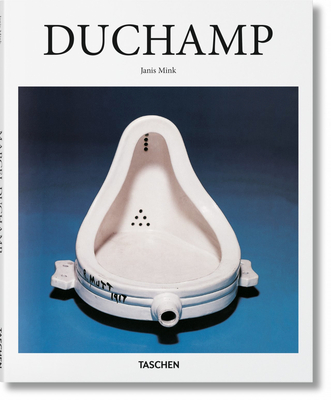Duchamp

Duchamp
When is a urinal no longer a urinal? When Marcel Duchamp (1887-1968) declared it to be art. The uproar that greeted the French artist's Fountain (1917), a porcelain urinal installed in a gallery, sent shock waves through the art world establishment that reverberate right through to today.This essential introduction distills all the daring and the scandal of Duchamp's practice into one essential overview not only of a pioneering creative but also of a critical moment in Western culture. From his groundbreaking blend of abstraction, Cubism, and Futurism in Nude Descending a Staircase (1912) to his forays into the now-iconic "readymades" such as Bicycle Wheel (1913) and Bottle Rack (1914) we explore how Duchamp consistently challenged the notion of what art is and, in so doing, opened up a world of conceptual possibilities beyond the "retinal" experience.
When is a urinal no longer a urinal? When Marcel Duchamp (1887-1968) declared it to be art. The uproar that greeted the French artist's Fountain (1917), a porcelain urinal installed in a gallery, sent shock waves through the art world establishment that reverberate right through to today.This essential introduction distills all the daring and the scandal of Duchamp's practice into one essential overview not only of a pioneering creative but also of a critical moment in Western culture. From his groundbreaking blend of abstraction, Cubism, and Futurism in Nude Descending a Staircase (1912) to his forays into the now-iconic "readymades" such as Bicycle Wheel (1913) and Bottle Rack (1914) we explore how Duchamp consistently challenged the notion of what art is and, in so doing, opened up a world of conceptual possibilities beyond the "retinal" experience.About the seriesEach book in TASCHEN's Basic Art series features: a detailed chronological summary of the life and oeuvre of the artist, covering his or her cultural and historical importancea concise biographyapproximately 100 illustrations with explanatory captions
When is a urinal no longer a urinal? When Marcel Duchamp (1887-1968) declared it to be art. The uproar that greeted the French artist's Fountain (1917), a porcelain urinal installed in a gallery, sent shock waves through the art world establishment that reverberate right through to today.This essential introduction distills all the daring and the scandal of Duchamp's practice into one essential overview not only of a pioneering creative but also of a critical moment in Western culture. Fr
PRP: 124.00 Lei
Acesta este Prețul Recomandat de Producător. Prețul de vânzare al produsului este afișat mai jos.
111.60Lei
111.60Lei
124.00 LeiLivrare in 2-4 saptamani
Descrierea produsului
When is a urinal no longer a urinal? When Marcel Duchamp (1887-1968) declared it to be art. The uproar that greeted the French artist's Fountain (1917), a porcelain urinal installed in a gallery, sent shock waves through the art world establishment that reverberate right through to today.This essential introduction distills all the daring and the scandal of Duchamp's practice into one essential overview not only of a pioneering creative but also of a critical moment in Western culture. From his groundbreaking blend of abstraction, Cubism, and Futurism in Nude Descending a Staircase (1912) to his forays into the now-iconic "readymades" such as Bicycle Wheel (1913) and Bottle Rack (1914) we explore how Duchamp consistently challenged the notion of what art is and, in so doing, opened up a world of conceptual possibilities beyond the "retinal" experience.
When is a urinal no longer a urinal? When Marcel Duchamp (1887-1968) declared it to be art. The uproar that greeted the French artist's Fountain (1917), a porcelain urinal installed in a gallery, sent shock waves through the art world establishment that reverberate right through to today.This essential introduction distills all the daring and the scandal of Duchamp's practice into one essential overview not only of a pioneering creative but also of a critical moment in Western culture. From his groundbreaking blend of abstraction, Cubism, and Futurism in Nude Descending a Staircase (1912) to his forays into the now-iconic "readymades" such as Bicycle Wheel (1913) and Bottle Rack (1914) we explore how Duchamp consistently challenged the notion of what art is and, in so doing, opened up a world of conceptual possibilities beyond the "retinal" experience.About the seriesEach book in TASCHEN's Basic Art series features: a detailed chronological summary of the life and oeuvre of the artist, covering his or her cultural and historical importancea concise biographyapproximately 100 illustrations with explanatory captions
When is a urinal no longer a urinal? When Marcel Duchamp (1887-1968) declared it to be art. The uproar that greeted the French artist's Fountain (1917), a porcelain urinal installed in a gallery, sent shock waves through the art world establishment that reverberate right through to today.This essential introduction distills all the daring and the scandal of Duchamp's practice into one essential overview not only of a pioneering creative but also of a critical moment in Western culture. Fr
Detaliile produsului










